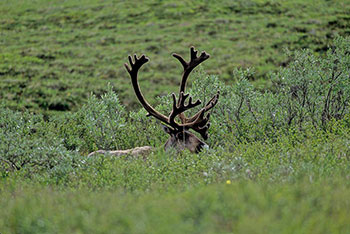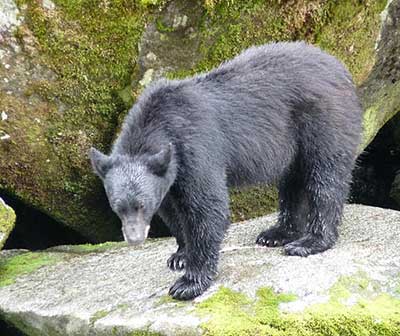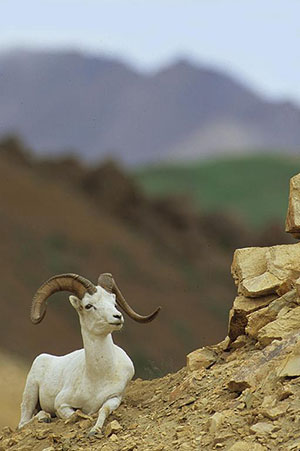Alaska Fish & Wildlife News
February 2014
Who Hunts for Alaska's Big Game?

At the end of hunting season, who takes home Alaska’s wildlife? Is it residents or out-of-state hunters? The answer depends on the animal – many brown bears head out of state, most moose and caribou are eaten by Alaskans.
Alaska is home to almost a million caribou and close to 200,000 moose. In 2012, Alaskans took home 91 percent of the 6,931 total moose harvested. About 6,150 moose were harvested by Alaskans and 630 by nonresident hunters.
Nonresident hunters harvested only 755 caribou in Alaska in 2012. Residents in general season and draw hunts took about 6,752 caribou, but the harvest by Alaskans is estimated to be at least 22,000, and probably more, since that estimate is conservative. In many parts of vast, rural Alaska, resident and subsistence hunters are not required to report caribou harvest. It’s safe to say Alaskans harvest at least 97 percent of the caribou taken.
Alaska has an estimated 30,000 brown bears statewide. Harvested bears must be sealed – inspected by Fish and Game or a representative – and the information gathered helps with management. Sealing records show 1,325 brown bears were harvested in 2012, 654 by nonresidents and 671 by residents

Kodiak Island, the Alaska Peninsula and Southeast Alaska’s Admiralty, Chichagof and Baranof islands provide the most brown bears. Some areas, such as the Alaska Peninsula, have every-other-year seasons for brown bears and that affects overall harvest numbers. An “on” year can be 30 percent higher – 2,086 brown bears were harvested in 2011, quite a bit more than the 2012 harvest of 1,325.
There are an estimated 100,000 black bears in the state of Alaska. Between 2003 and 2007, harvest of black bears steadily increased, from about 2,460 to 3,252. That trend concerned wildlife managers, especially in some areas where nonresident harvest was already high and increasing. On Prince of Wales and adjacent islands, the harvest in that period was about 450/year, and about 80 percent were taken by nonresident hunters. That led to changes in the way bears are managed in Southeast.

In 2012, 1,929 black bears were harvested, 1,210 by residents and 719 by nonresidents.
Hunters harvested 664 Dall sheep in 2012; nonresidents took 267 sheep and resident hunters took 397, about 60 percent.
In 2012, 418 mountain goats were harvested in Alaska, 122 by nonresidents (about 30 percent) and 294 by resident hunters.
Other animals receive virtually no attention from nonresident hunters. Only six musk ox were taken in 2012 by nonresidents, and 97 were taken by Alaskans. Only two bison were taken by nonresidents, and 69 were harvested by residents. All 49 elk harvested in Alaska in 2012 were taken by residents.
Riley Woodford is the editor of Alaska Fish and Wildlife News and the producer of the “Sounds Wild” radio program. He can be reached at riley.woodford@alaska.gov
Subscribe to be notified about new issues
Receive a monthly notice about new issues and articles.
